(Chat)GPT v BERT: Dawn of Justice for Semantic Change Detection
Jan 25, 2024Francesco Periti, Haim Dubossarsky, Nina Tahmasebi
In the universe of Natural Language Processing, Transformer-based language models like BERT and (Chat)GPT have emerged as lexical superheroes with great power to solve open research problems. In this paper, we specifically focus on the temporal problem of semantic change, and evaluate their ability to solve two diachronic extensions of the Word-in-Context (WiC) task: TempoWiC and HistoWiC. In particular, we investigate the potential of a novel, off-the-shelf technology like ChatGPT (and GPT) 3.5 compared to BERT, which represents a family of models that currently stand as the state-of-the-art for modeling semantic change. Our experiments represent the first attempt to assess the use of (Chat)GPT for studying semantic change. Our results indicate that ChatGPT performs significantly worse than the foundational GPT version. Furthermore, our results demonstrate that (Chat)GPT achieves slightly lower performance than BERT in detecting long-term changes but performs significantly worse in detecting short-term changes.
Logical Reasoning for Natural Language Inference Using Generated Facts as Atoms
May 22, 2023Joe Stacey, Pasquale Minervini, Haim Dubossarsky, Oana-Maria Camburu, Marek Rei
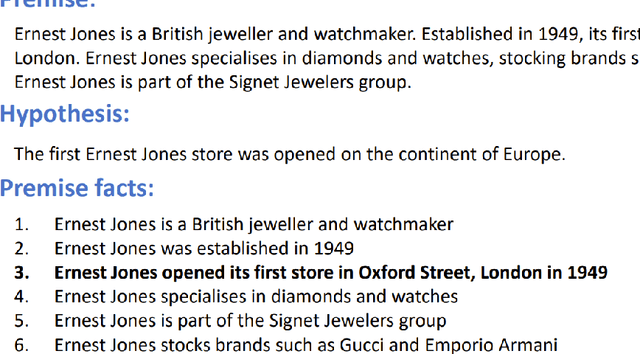
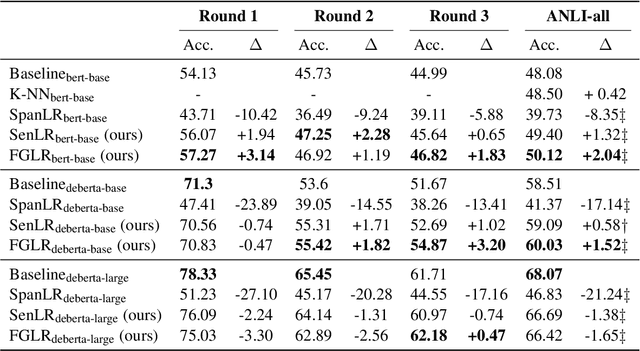
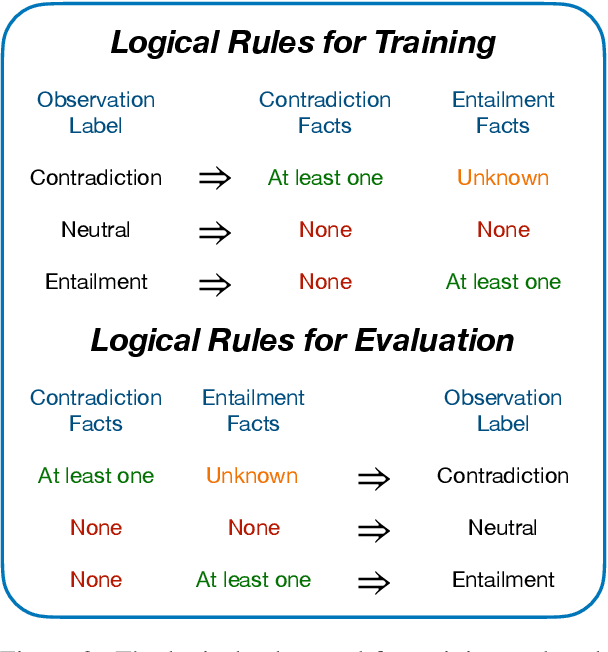
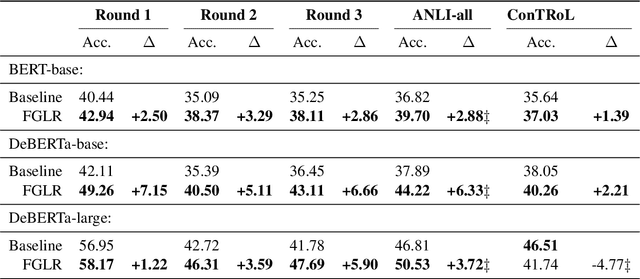
State-of-the-art neural models can now reach human performance levels across various natural language understanding tasks. However, despite this impressive performance, models are known to learn from annotation artefacts at the expense of the underlying task. While interpretability methods can identify influential features for each prediction, there are no guarantees that these features are responsible for the model decisions. Instead, we introduce a model-agnostic logical framework to determine the specific information in an input responsible for each model decision. This method creates interpretable Natural Language Inference (NLI) models that maintain their predictive power. We achieve this by generating facts that decompose complex NLI observations into individual logical atoms. Our model makes predictions for each atom and uses logical rules to decide the class of the observation based on the predictions for each atom. We apply our method to the highly challenging ANLI dataset, where our framework improves the performance of both a DeBERTa-base and BERT baseline. Our method performs best on the most challenging examples, achieving a new state-of-the-art for the ANLI round 3 test set. We outperform every baseline in a reduced-data setting, and despite using no annotations for the generated facts, our model predictions for individual facts align with human expectations.
Computational modeling of semantic change
Apr 13, 2023Nina Tahmasebi, Haim Dubossarsky


In this chapter we provide an overview of computational modeling for semantic change using large and semi-large textual corpora. We aim to provide a key for the interpretation of relevant methods and evaluation techniques, and also provide insights into important aspects of the computational study of semantic change. We discuss the pros and cons of different classes of models with respect to the properties of the data from which one wishes to model semantic change, and which avenues are available to evaluate the results.
Logical Reasoning with Span Predictions: Span-level Logical Atoms for Interpretable and Robust NLI Models
May 23, 2022Joe Stacey, Pasquale Minervini, Haim Dubossarsky, Marek Rei
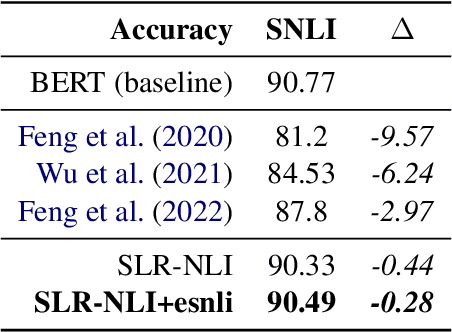
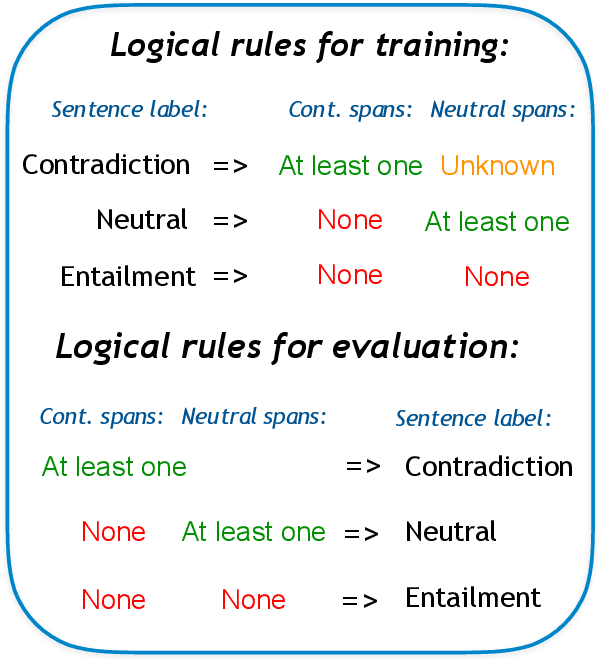
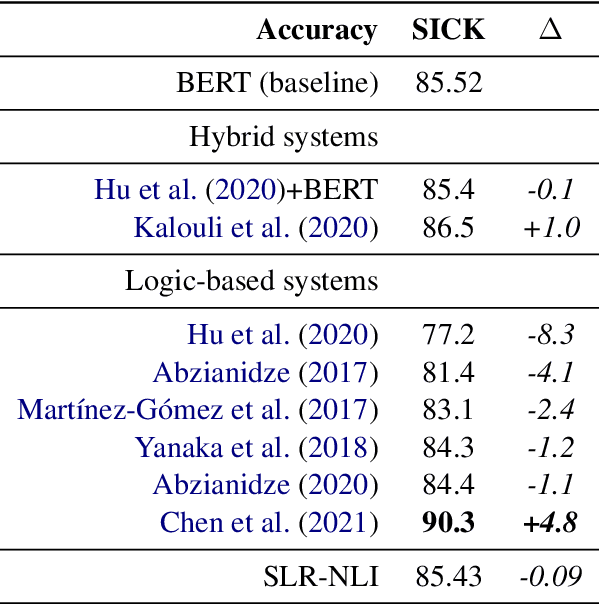
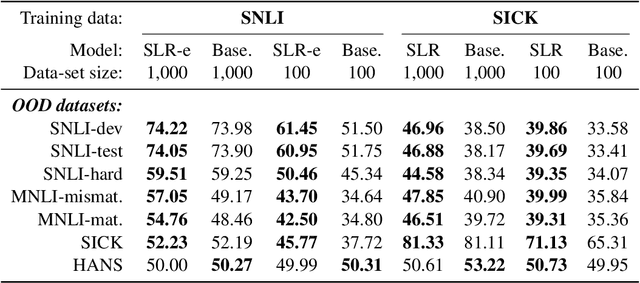
Current Natural Language Inference (NLI) models achieve impressive results, sometimes outperforming humans when evaluating on in-distribution test sets. However, as these models are known to learn from annotation artefacts and dataset biases, it is unclear to what extent the models are learning the task of NLI instead of learning from shallow heuristics in their training data. We address this issue by introducing a logical reasoning framework for NLI, creating highly transparent model decisions that are based on logical rules. Unlike prior work, we show that the improved interpretability can be achieved without decreasing the predictive accuracy. We almost fully retain performance on SNLI while identifying the exact hypothesis spans that are responsible for each model prediction. Using the e-SNLI human explanations, we also verify that our model makes sensible decisions at a span level, despite not using any span-level labels during training. We can further improve model performance and the span-level decisions by using the e-SNLI explanations during training. Finally, our model outperforms its baseline in a reduced data setting. When training with only 100 examples, in-distribution performance improves by 18%, while out-of-distribution performance improves on SNLI-hard, MNLI-mismatched, MNLI-matched and SICK by 11%, 26%, 22%, and 21% respectively.
DWUG: A large Resource of Diachronic Word Usage Graphs in Four Languages
Apr 17, 2021Dominik Schlechtweg, Nina Tahmasebi, Simon Hengchen, Haim Dubossarsky, Barbara McGillivray
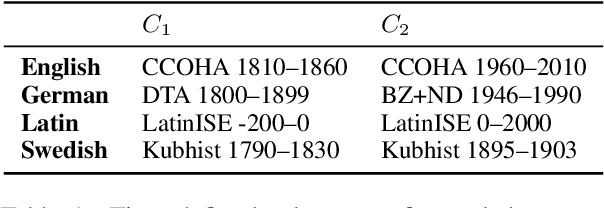



Word meaning is notoriously difficult to capture, both synchronically and diachronically. In this paper, we describe the creation of the largest resource of graded contextualized, diachronic word meaning annotation in four different languages, based on 100,000 human semantic proximity judgments. We thoroughly describe the multi-round incremental annotation process, the choice for a clustering algorithm to group usages into senses, and possible - diachronic and synchronic - uses for this dataset.
Challenges for Computational Lexical Semantic Change
Jan 19, 2021Simon Hengchen, Nina Tahmasebi, Dominik Schlechtweg, Haim Dubossarsky
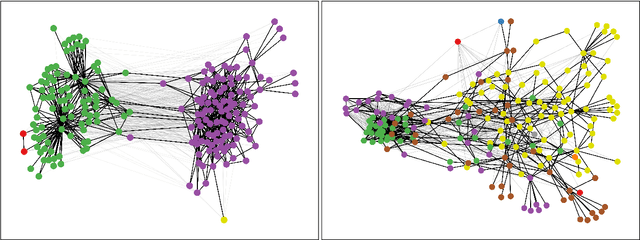
The computational study of lexical semantic change (LSC) has taken off in the past few years and we are seeing increasing interest in the field, from both computational sciences and linguistics. Most of the research so far has focused on methods for modelling and detecting semantic change using large diachronic textual data, with the majority of the approaches employing neural embeddings. While methods that offer easy modelling of diachronic text are one of the main reasons for the spiking interest in LSC, neural models leave many aspects of the problem unsolved. The field has several open and complex challenges. In this chapter, we aim to describe the most important of these challenges and outline future directions.
SemEval-2020 Task 1: Unsupervised Lexical Semantic Change Detection
Aug 28, 2020Dominik Schlechtweg, Barbara McGillivray, Simon Hengchen, Haim Dubossarsky, Nina Tahmasebi
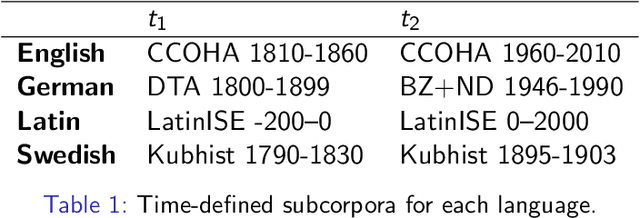
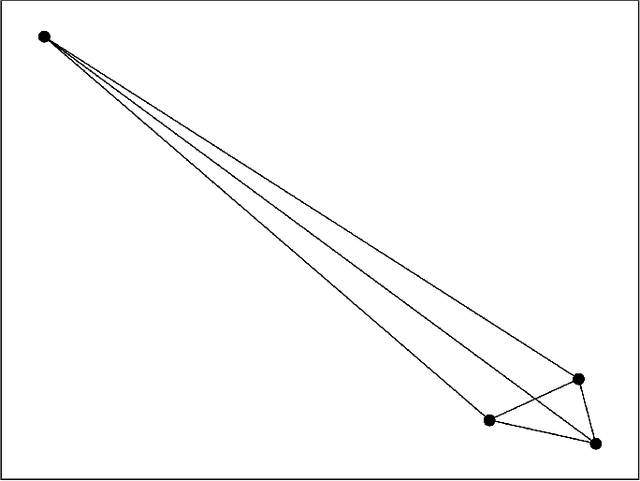
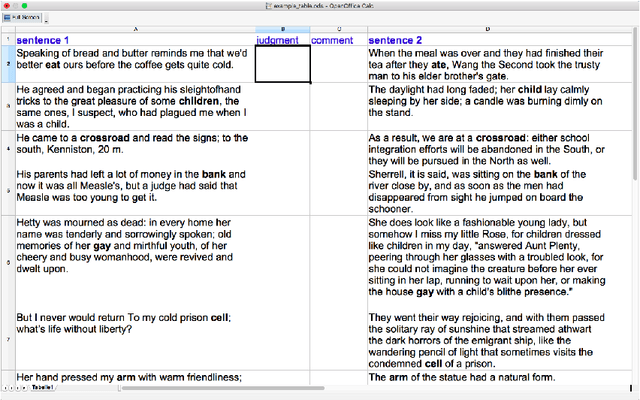
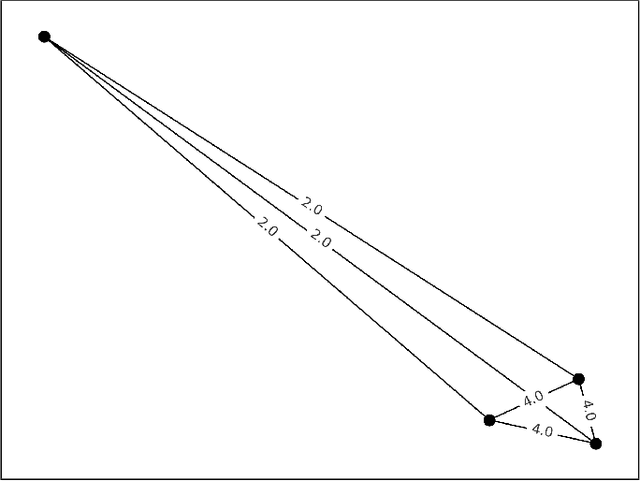
Lexical Semantic Change detection, i.e., the task of identifying words that change meaning over time, is a very active research area, with applications in NLP, lexicography, and linguistics. Evaluation is currently the most pressing problem in Lexical Semantic Change detection, as no gold standards are available to the community, which hinders progress. We present the results of the first shared task that addresses this gap by providing researchers with an evaluation framework and manually annotated, high-quality datasets for English, German, Latin, and Swedish. 33 teams submitted 186 systems, which were evaluated on two subtasks.
There is Strength in Numbers: Avoiding the Hypothesis-Only Bias in Natural Language Inference via Ensemble Adversarial Training
Apr 27, 2020Joe Stacey, Pasquale Minervini, Haim Dubossarsky, Sebastian Riedel, Tim Rocktäschel
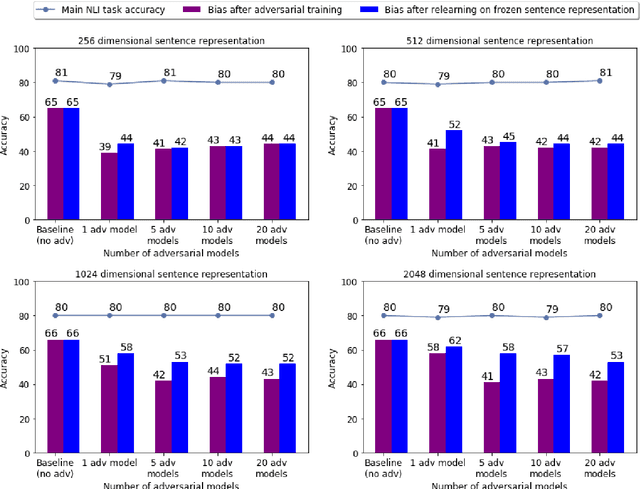
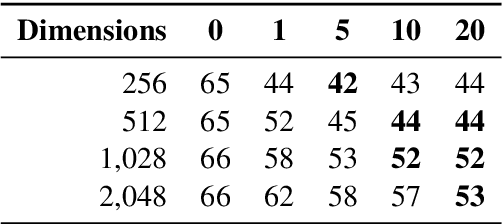
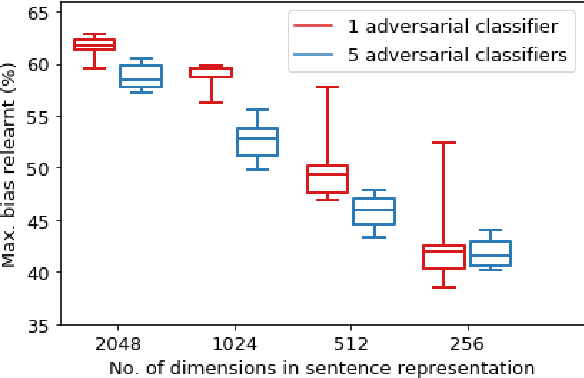

Natural Language Inference (NLI) datasets contain annotation artefacts resulting in spurious correlations between the natural language utterances and their respective entailment classes. These artefacts are exploited by neural networks even when only considering the hypothesis and ignoring the premise, leading to unwanted biases. Previous work proposed tackling this problem via adversarial training, but this leads to learned sentence representations that still suffer from the same biases. As a solution, we propose using an ensemble of adversaries during the training, encouraging the model to jointly decrease the accuracy of these different adversaries while fitting the data. We show that using an ensemble of adversaries can prevent the bias from being relearned after the model training is completed, further improving how well the model generalises to different NLI datasets. In particular, these models outperformed previous approaches when tested on 12 different NLI datasets not used in the model training. Finally, the optimal number of adversarial classifiers depends on the dimensionality of the sentence representations, with larger dimensional representations benefiting when trained with a greater number of adversaries.
 Add to Chrome
Add to Chrome Add to Firefox
Add to Firefox Add to Edge
Add to Edge